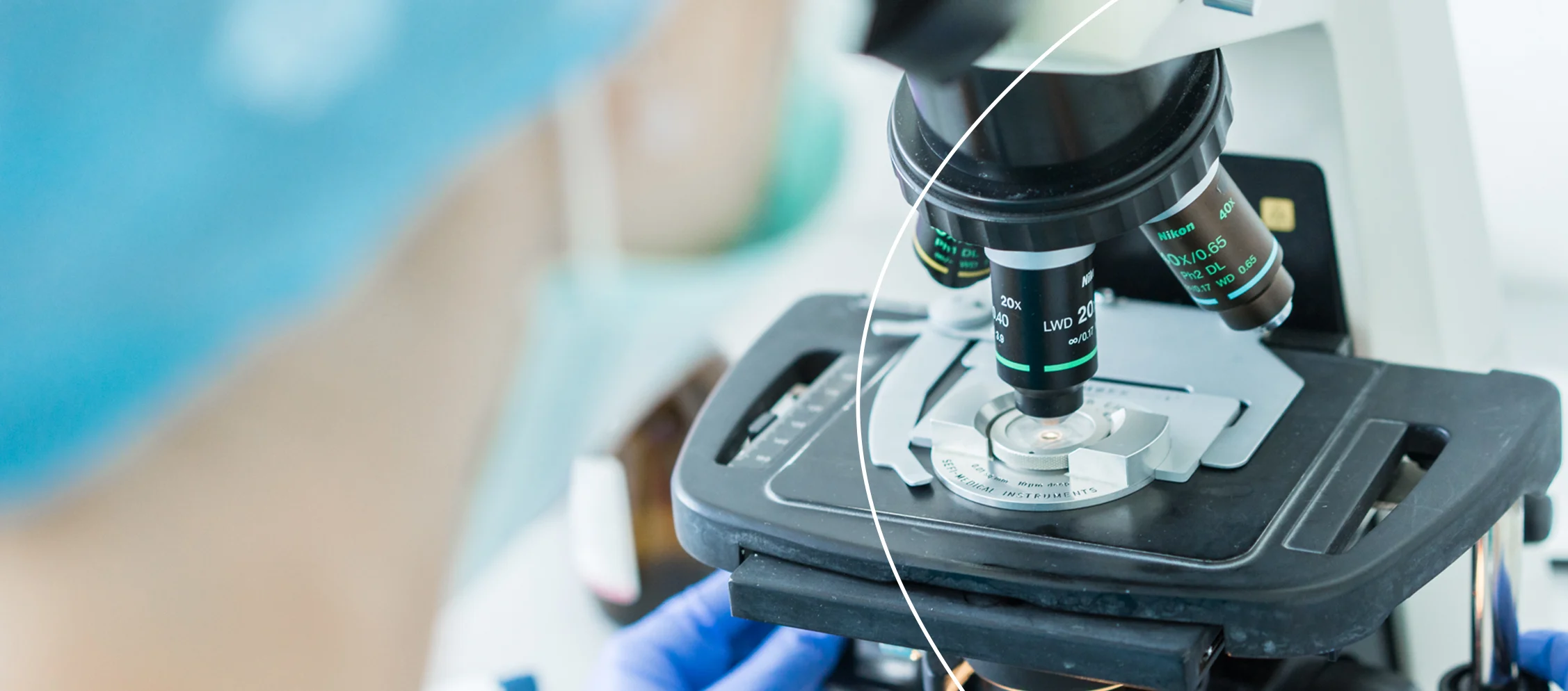
The aim of a sperm analysis is to determine the quantity, quality, motility, and correct morphology of the sperm.
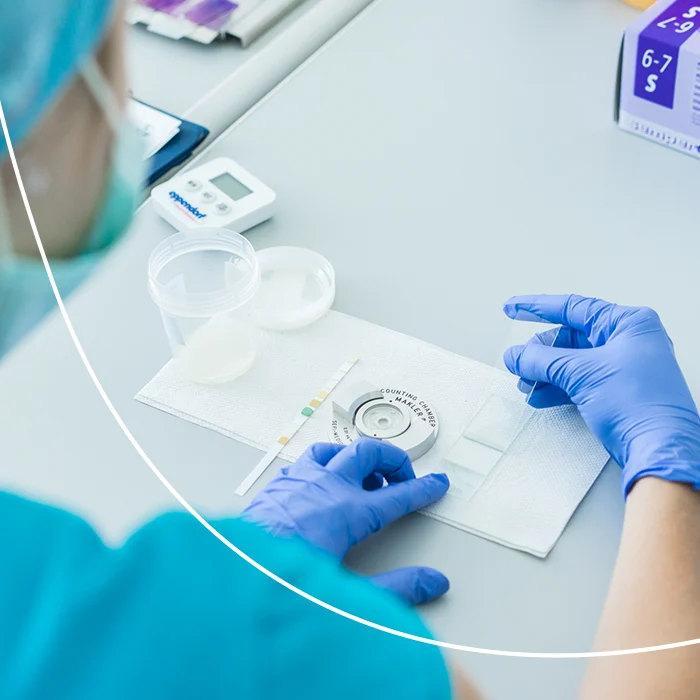
Based on the sperm analysis, besides evaluating the count, volume, motility, and morphology of the sperm, we can also assess the degree of their DNA damage (fragmentation). We examine the DNA of the sperm using a specialized test called Halosperm G2.
Within the diagnosis of male infertility factors, an important parameter is, among other things, determining the proportion of immature sperm in the semen. Sperm maturity is determined by Immasperm (a diagnostic tool) based on the staining intensity of the sperm.
The VITALITY test works on the principle of staining. The dye used (eosin) penetrates only into dead sperm. Thus, after applying the dye, live sperm remain white, while dead sperm with a damaged cytoplasmic membrane turn pink to red.
Oxidative stress affects the quality and functionality of sperm and causes damage to their DNA. To detect oxidative stress, we use the fastest and most accurate test, MIOXSYS. This test enhances the accuracy of male infertility diagnosis.
These methods help us select the sperm that offer the highest chance of creating an embryo.
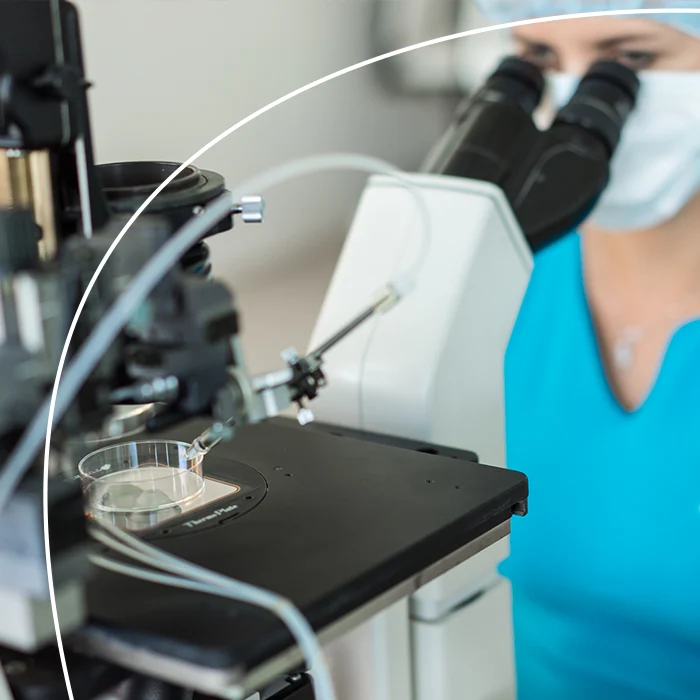
The most commonly used micromanipulation technique, in which one sperm is actively transferred into each egg. From the perspective of embryo development, it's a safe method that does not affect the occurrence of developmental defects in fetuses.
This is a modification of the ICSI method designed to select the optimal sperm. The method involves mature sperm binding to a specially treated surface of a petri dish on which a hyaluronan gel is applied.
Sperm have a limited lifespan and undergo a process called apoptosis. Apoptotic sperm cannot be typically distinguished from normal sperm. To exclude damaged sperm from a semen sample, the MACS® ART Annexin V system is used.
This method is designed to select the highest quality sperm for insemination of the patient, or for fertilization of eggs using ICSI and PICSI techniques. The Fertile chip is a single-use device, composed of two chambers separated by a special membrane.
A special medium used to artificially activate sperm. Adding the medium to a sample of completely immotile sperm activates the energy reserves of live sperm, which gain motility. This makes it easy to distinguish live sperm from dead sperm.
It helps determine the most suitable moment for micro-manipulative fertilization of eggs with sperm (ICSI). That is the moment when there is the highest probability of successful embryo formation.
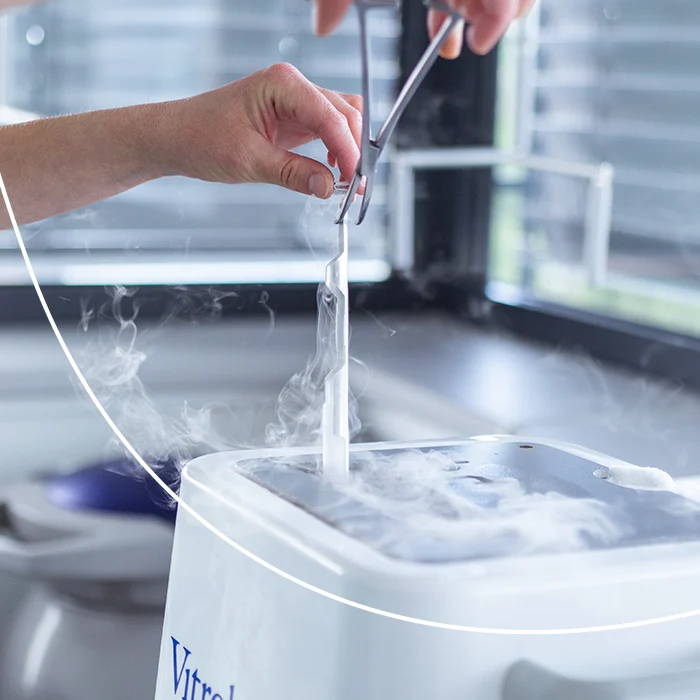
MOON stands for 'Mature Oocytes Only.' It refers to a detailed examination of the maturity of eggs in polarized light to properly time fertilization.
After fertilization of the egg by sperm, embryologists monitor and care for the successful development of the embryos. To accelerate growth and increase the chance of reaching the blastocyst stage, we offer modern embryo culture media.

A medium containing GM-CSF, an important growth hormone. It helps the embryo take in nutrients and protects it from cellular stress and apoptosis.
Each embryo thrives best in a woman’s body. The MIRI Time-lapse incubator can provide almost the same conditions and environment for the embryos.
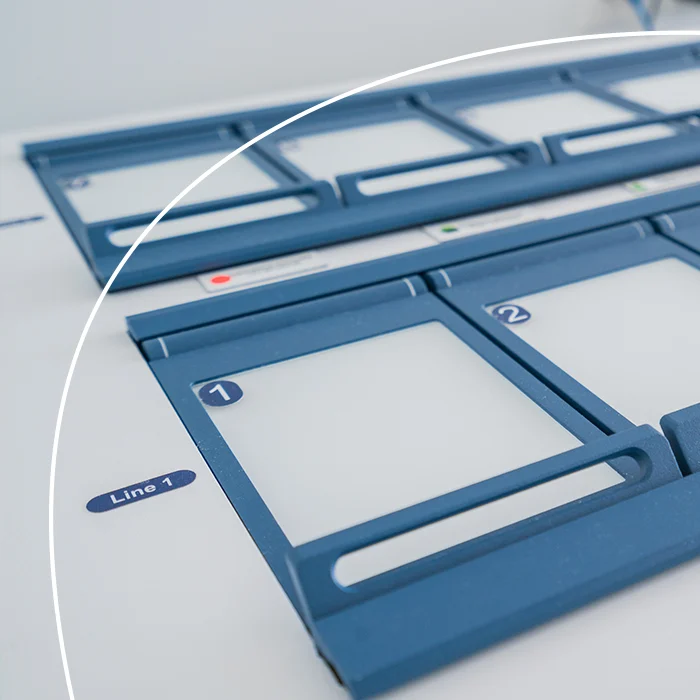
The MIRI TL incubator offers embryos the best care, comfort, and individual space. The embryos of each couple are cultured separately in one of the 12 separete heated chambers.
New innovative tool, Magenta-AI™, which combines advanced genetic testing (PGT-A Plus) and artificial intelligence (Chloe). This tool provides embryologists, IVF specialists and geneticists with invaluable and accurate information for making decisions about embryos before they are transferred to the uterus.
A problem with successful conception can be caused by the uterine lining, which might not be sufficiently prepared for transfer. Testing of endometrial maturity ensures the selection of the right moment for transfer.
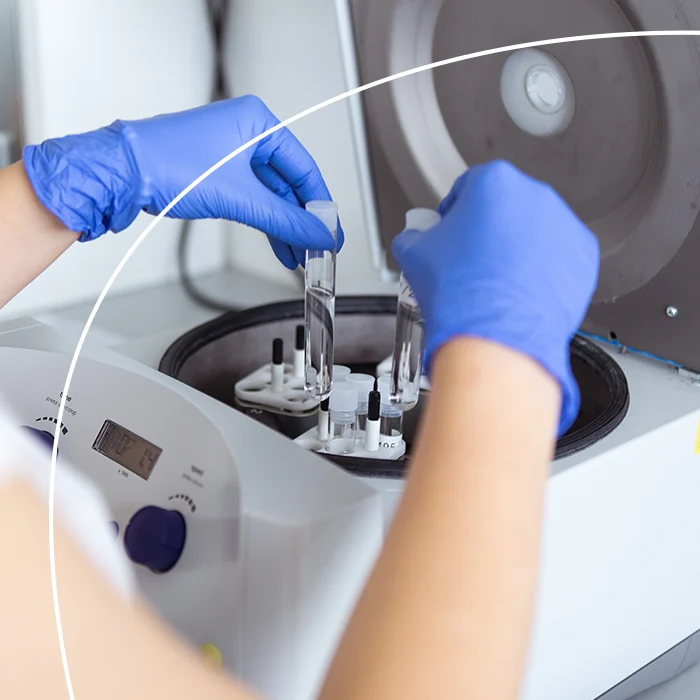
An examination that includes three tests from one sample of the uterine lining. A detailed examination of the uterine environment and determining the optimal moment for embryo transfer can be a very important step in identifying the cause of infertility.
The test is intended for all women who, during treatment with assisted reproduction methods, have obtained a small number of embryos or experience repeated embryo implantation failures.
The transfer of an embryo into the uterus is one of the most crucial steps in IVF treatment, so it’s beneficial to support it with methods that help successful embryo implantation.
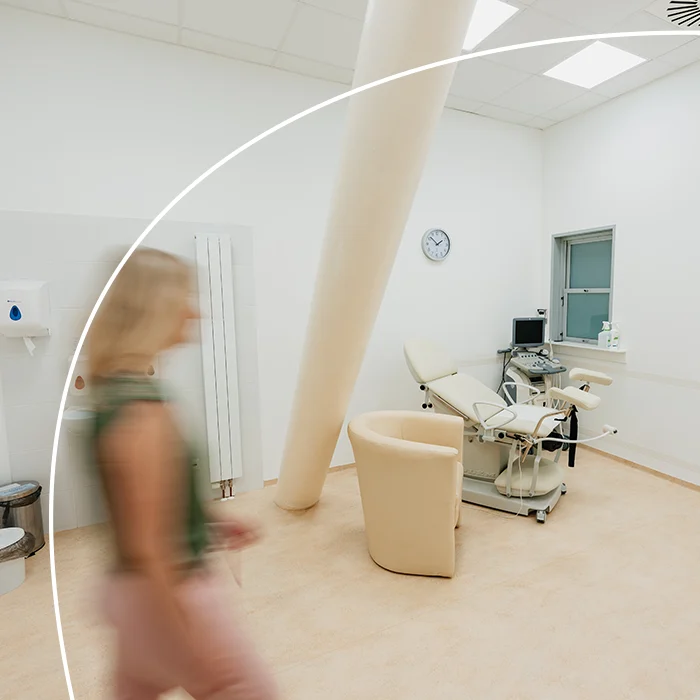
The transfer of an embryo into the uterus is one of the most crucial steps in IVF treatment.
A cultivation medium containing a growth hormone, meaning the embryo not only develops better, but also communicates with the uterine lining. It increases the chances of successful embryo transfer in utero.
A simple blood test can reveal whether the immune response in the uterine lining may prevent the embryo from implanting. This test is especially recommended if you have experienced repeated miscarriages or unsuccessful embryo transfers.
We seek the right connections to lead you to your desired goal.
we’ve been here for you
have been born thanks to us
with a rare disease that we’ve helped
We draw from our extensive experience and understand that each story is unique and deserves understanding and an individual approach.
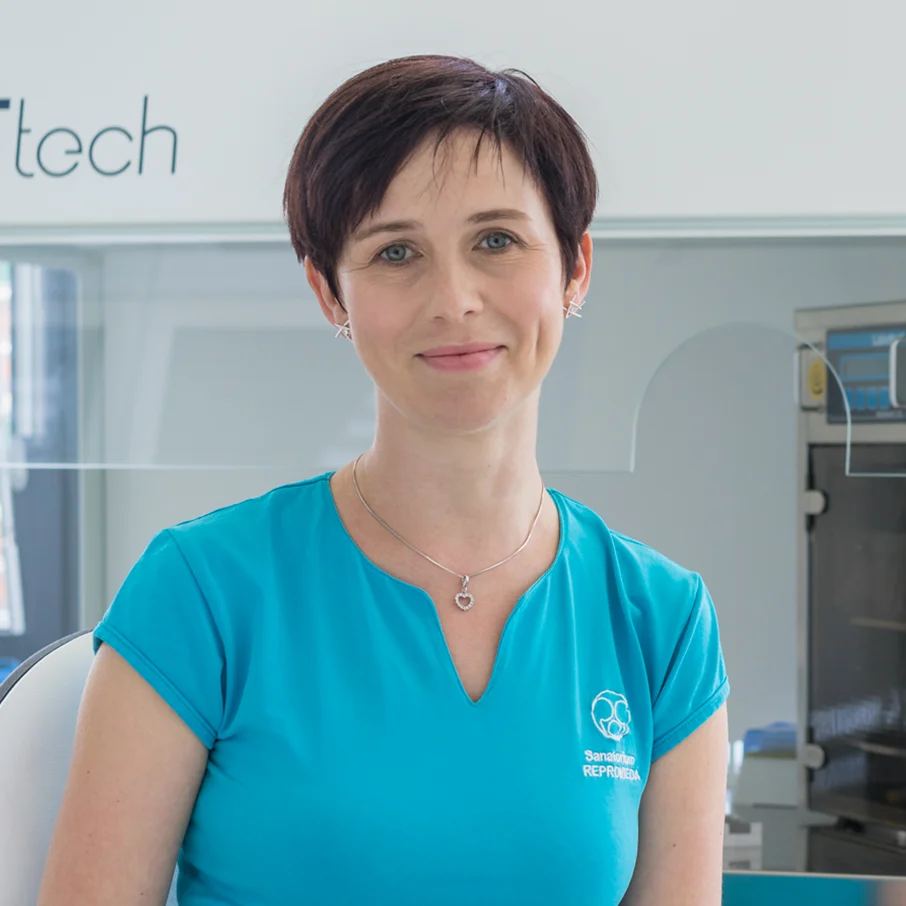
Head of the Embryology Laboratory
mpesakova@repromeda.cz
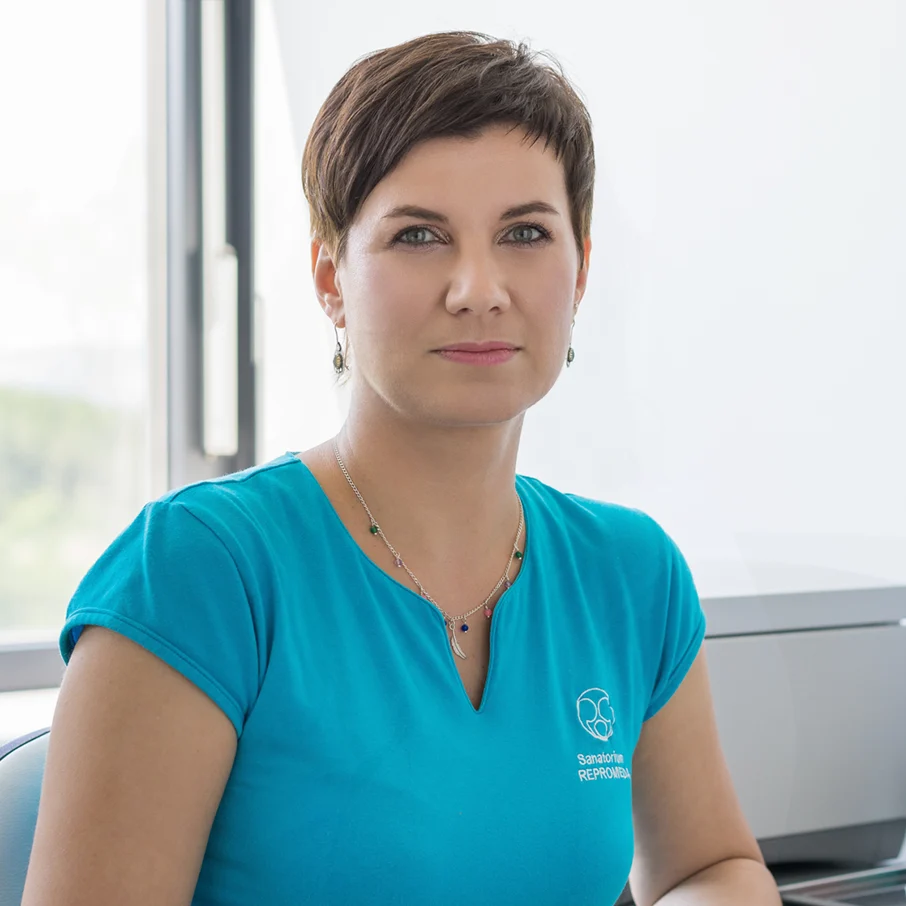
R&D director
gtauwinklova@repromeda.cz

R&D director (Research Scientist for Genetics)
mhornak@repromeda.cz
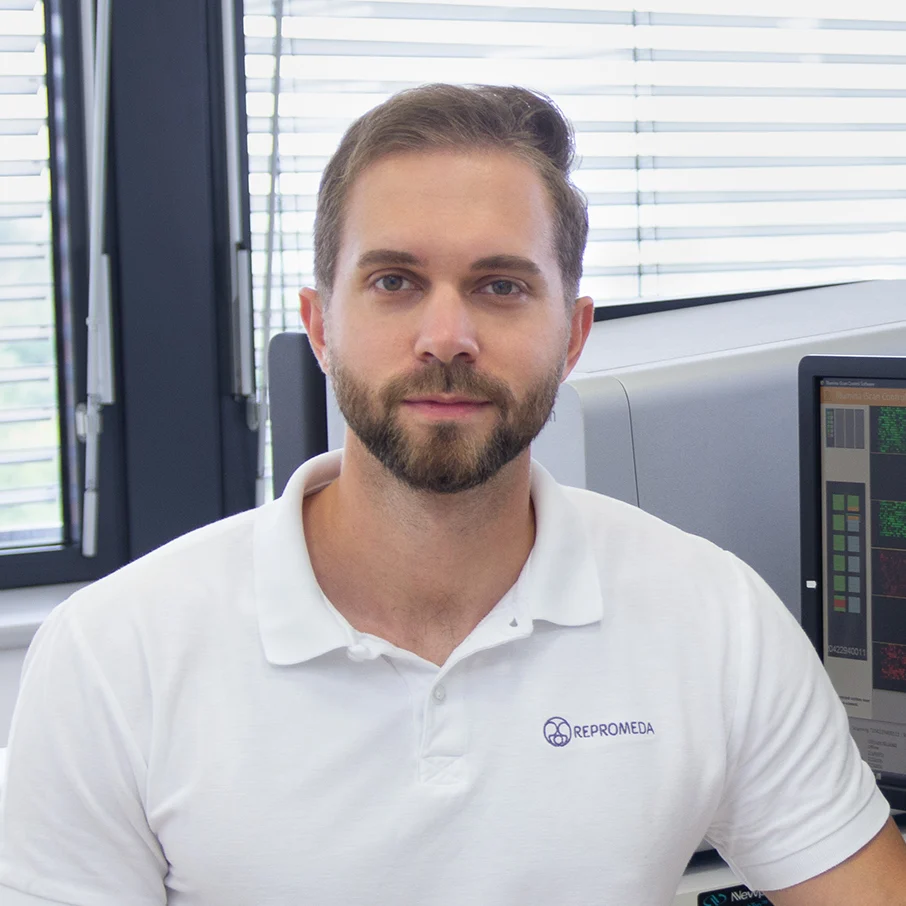
Head of the Molecular Genetics Department
rnavratil@repromeda.cz

Director of the Genetics Laboratory (Scientific Director of the Laboratory)
dkubicek@repromeda.cz
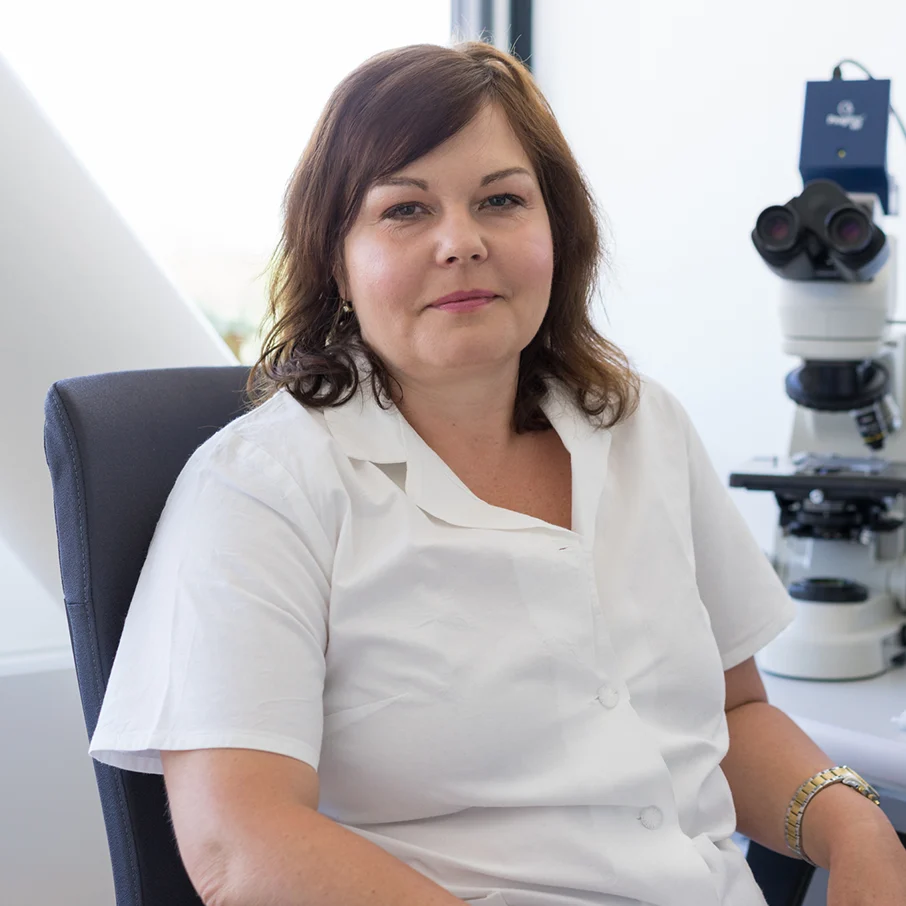
Head of the Cytogenetics Department
vlinkova@repromeda.cz
And take the first step on your baby journey. The doctor will discuss with you everything you are interested in and suggest the next steps.
Your questions will be answered Mon-Fri, 7am-6pm.
Your questions will be answered Mon-Fri, 7am-3pm.
Your questions will be answered Mon-Fri, 7am-6pm.
View on map
Your questions will be answered Mon-Fri, 7am-3pm.
View on map